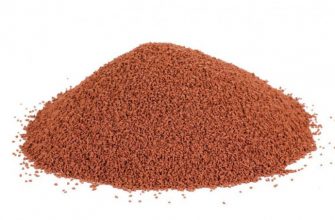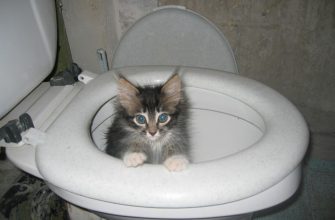Aquarium fish selection
There are more than 2000 species of aquarium fish, and it is usually difficult to choose the right one to keep in your aquarium. The main thing is not to be guided by desire only; you need to take into account that not every fish can get along with others; some may even be dangerous to humans.
Aquarium fish are divided in two groups:
1. More challenging fish which require special living conditions. They include all exotic species. It is necessary to create living conditions that are as similar as possible to their natural habitat. As a rule, such fish cannot breed in captivity, so they are brought in after being caught in the wild. This type of fish is not the best option for a novice aquarium owner.
2. Unpretentious fish. They include all species that can adapt and survive in absolutely any environment. They are hardy from birth, but they get the best health and bright color if they are kept in conditions closest to nature. Such fish are cyprinids and characin, Killi fish, and Goldfish.
Before buying an aquarium fish, you need to learn in details the information about its needs and requirements. Articles from the Internet or a consultant in a pet shop will help you in this. The main thing is to have a sense of responsibility, as fish are living beings.
Choosing an aquarium and accessories
A beginner needs to choose and buy an aquarium and accessories for it, including a device for saturating water with air, a filter and a water heater. This is an ideal set that helps to create the essential habitat for fish. Additionally, depending on how whimsical the fish are, you may need to buy live plants or substrate. What is not important for fish is the shape and design of the aquarium. But an owner should decide whether he or she will buy a fully equipped aquarium or equip it on his/her own. It is necessary to specify what is included in the set. There must be a lamp, a thermostat, and a cover.
Some useful tips for choosing an aquarium
You can buy an aquarium together with a stand or separately. Choose according to what is suitable for your room. Preferably, the cover is supplied with the kit, especially if the shape of the aquarium is non-standard. The cover works to protect the aquarium from dust, and your room from excess humidity. Also, the cover is used to fix on any additional equipment or lighting. Before you buy the aquarium, decide on what kind of microclimate you need to create. In other words, the fish tank equipment must be designed to keep water fresh for the fish.
Fish compatibility
Only a certain number of fish and fish species can live in one tank together. Not all the fish can get along with each other in the type of closed system that a home aquarium provides. In addition, each species has its own characteristics of behavior as well as requirements from the environment.
When selecting the fish take into account such criteria as:
1. Fish behavior
2. The adult size
3. The hydrochemical composition of water
You should not pay attention only to appearance of the fish and the brightness of their color. There is a special chart that shows all types of aquarium fish and their compatibility. It is important to study it before buying a new resident for your fish tank. After reading the table, review the information about the fish species you selected and find out the requirements for their care.
Popular breeds that can coexist together are:
Guppy – with Danio, Tetra and Botia.
Scalar – with Gourami, Swordtail fish and Donacia
Barbus is perfectly compatible with Labeo, Poecilia and Corydoras.
Labeo chooses Scalar and Molly as neighbors.
Donacia with Betta (fighting fish), Swordtail fish and Danio.
Astronotus (Oscar fish) and Cichlid tend not to get along with any species at all; or it is extremely difficult for them to do so.
The cohabitation rate of the fish may be affected by their individual features. Before buying a fish, keep it under close observation while it is in a pet shop. How does it behave towards others fish – aggressive or friendly?
It would seem that choosing an aquarium fish is easy, but that’s not so. Go over all the characteristics of each type of fish, their behavior and care requirements to have peace and harmony in your home aquarium.
Basics rules for keeping fish
Here are 11 basic rules to follow to keep your fish healthy and the aquarium water clean:
1. Remove any remaining food in the aquarium using a siphon 10 minutes after feeding.
2. Provide the fish with enough free space in the aquarium, do not make it overpopulated. There is one easy rule to remember: 1 cm of adult fish requires 1.5 liters of water at least.
3. Remember, that there is no need to perform a big cleanup every month. It is enough to change the water regularly (1-2 times a week), and clean the aquarium once every one or two months. You should not change more than 20% of the water in one day.
4. Scavenger fish and crawfish are not able to thoroughly clean dirt from the aquarium; they only eat food that falls to the bottom. Therefore, be sure to siphon the aquarium bottom several times a week.
5. Fish and aquarium should not be purchased on the same day. Buy an aquarium and all the equipment first, set it up at home and let it just run for three days. Then purchase your selection of fish.
6. In an aquarium, where there are no living plants, the bottom layer (substrate & soil) should not be more than 0.7 cm. To plant live aquarium plants, you need gravel with a capacity of 2 kg for every 10 liters of water. Periodically stir the gravel slowly to get all the garbage out.
7. Don’t add too many fish in the same aquarium at the same time. Buy a few fish, watch them, let them get comfortable and get used to it. Then, after a while, gradually add others.
8. Save the aquarium from pollution. Make sure that all devices or accessories that you put into it are clean and free from any detergent residue. Choose only high-quality gravel and live plants without pesticides.
9. Wash your hands thoroughly before putting them into the aquarium. Also wash them afterwards as well.
10. Avoid too many decorations; the fish love free space.
11. In any case, don’t refill the aquarium with fresh water. Pour a small amount of water out the aquarium, and fill it with settled water.
Water requirements
Each type of aquarium fish has special requirements for water. And there is no universal answer to the question about water. Some fish fit with just settled water, others need filtered water or water from a special cleaning system. Danios or Neons are not fussy and easily adapt to regular tap water. But there are fish species that can live and breed only in water that meets certain parameters.
There are three main criteria for aquarium water:
1. A water hardness factor
It is important to bear in mind that some types of fish need softened water, while others survive well in hard water.
2. Water acidification level
Medium and the optimal level estimated at 7.
3. Electrical conductivity of water
It is important to change the aquarium water regularly (once or twice a week) to keep it clean and prevent any infection. Fish feel better if they are in clean water, free of small debris and pollution.
Drain a third of the aquarium water, and then pour in the settled clean water. It is important to prepare water for the aquarium properly. Household filters for drinking water treatment are perfect for this. Monitor the temperature of the settled water, which should be equal to that in the aquarium. A sharp drop in water temperature can cause fish to get sick.
Water settling is an important process that removes bubbles out that are dangerous for fish.
Feeding aquarium fish
There are several types of fish food:
1. Dry food is the basis of the diet of most fish. It is important to have a high-quality one, which offers all the necessary minerals for your fish.
2. Live food, such as moths, worms, and crustaceans is necessary for additional feeding. Use only high-quality food; otherwise it will be worse for the fish.
3. Frozen food is the safest type and contains all the necessary nutrients.
4. Plant-based food (or Greens) should be added periodically to the fish diet; it can be in the form of flakes.
You need to choose the type of food that fits your aquarium fish and provides them with all the nutrients and minerals. For example, predatory fish will not eat plant food, they need worms; and herbivorous fish need greens. Fish can be fed 1-2 times a day in a small amount. The perfect time to feed fish is in the morning and in the evening. Providing the proper food will guarantee excellent health, activity and bright color for your aquarium fish.







